In questo QuickTutorial, saremo ricreare i principali accordi-stab suono synth da Benny Benassi "Cinema":
(Ci sono infatti tre diverse versioni di questo suono descritto nella traccia, che andremo a riprodurre essere breve, soffocata corda-pugnalata suono che appare a 0:29 nel video, poco prima della voce, ma senza il basso linea, che suona come una traccia diversa.) Useremo ES Logic 2 per questo. Cominciamo.
Fase 1 - Impostazione del progetto Logic
Come al solito, il lancio Logic, e iniziare con un nuovo progetto vuoto contenente un vuoto traccia di strumento software:
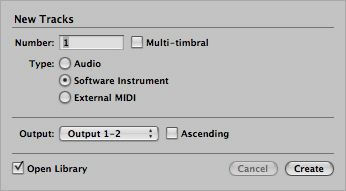
Fare clic e tenere premuto il EVP88 strumento predefinito nella parte superiore della striscia di canale e scegliere
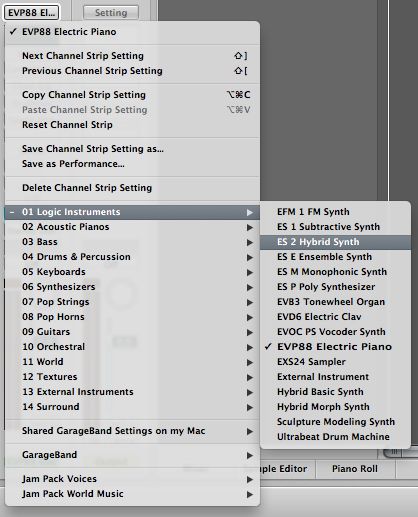
Fase 2 - Analizzare il suono
Ecco la mia trascrizione della progressione di accordi in questione come lo sento:
Ritmicamente ha
Fase 3 - Creare il suono
OK, ecco il mio ES 2 versione della patch:
Fate del vostro meglio per emulare queste impostazioni come esattamente come si può riprodurre la mia patch, mentre si sperimenta con le impostazioni per vedere che effetto hanno sul suono complessivo. Faremo anche a vedere alcune di queste impostazioni più in dettaglio in modo da poter capire cosa sta succedendo in questa patch:
- First, note that we have all three oscillators enabled. 1 & 3 are set to sawtooth waves, which gives us our basic buzzy sound. Osc 2 is set to rectangular sync. Oscillator 1 is set +6c Oscillators 2 to 12s -2c, and Oscillator 3 is detuned 12s and 10c to add a little more fullness to the patch.
- From there, the mixed oscillators go through a low-pass filter, with the Cut almost all the way down and the Res (resonance) a little over quarter way. The other filter is mixed out, as set in the Blend slider.
- After that, in the Effects stage, I've left the settings at heir default values.
- Next, in the Router, the first Router slot's Target is set to Cutoff 1 (the Cut frequency of the first filter), with the Source set to Env2 (Envelope 2). The Control Amount slider (the green arrowhead) is set to the top of the positive value range, so the filter cutoff sweeps over a fairly wide range. (The other Router slots are disabled, as we don't need them for this patch.)
- Below the Router, Envelope 3, which is controlling the amplitude of the patch, is set to a short attack (A) and decay (D), with a medium release (R), to create the short stabbing envelope for the chords. Envelope 2, which is controlling the cutoff frequency of the first filter (as set in the Router), has similar settings, but with a somewhat longer Decay and Release, so the filter closes down just a bit faster than the amplitude.
Dopo aver impostato il vostro ES 2 impostazioni per abbinare il mio, si dovrebbe sentire un suono molto simile a questa (a cui ho aggiunto un semplice 4 / 4 cassa):
[Audio id = "8367"]
(Nota bene: verso la fine del campione audio al di sopra del Decay 2 Env è automatizzato di aprire il suono).
E questo è tutto. Come sempre, vi incoraggio a modificare le impostazioni in questa patch a venire con le varianti proprio sul suono. E se avete voglia di prendere questo concetto un po 'oltre, prova a partire con queste impostazioni e vedere se è possibile ricreare il primo suono della traccia video (suggerimento: provare il filtro passa-alto), così come il suono più pieno corda prima che la vocale inizia (suggerimento: provare un decadimento busta più ampiezza e filtro.)
E per saperne di più sul controllo ES2 fuori Logic 206 - ES2 Exposed .


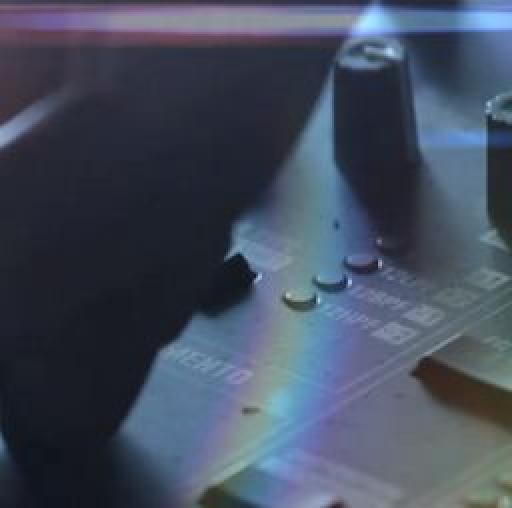
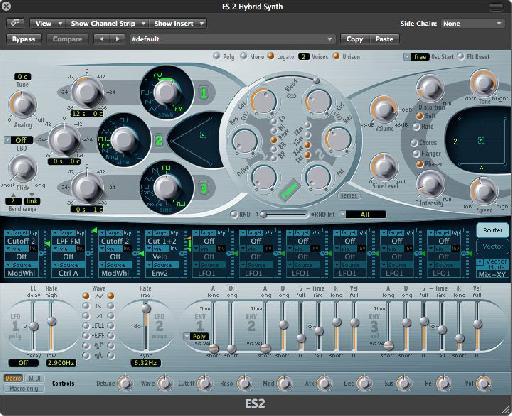

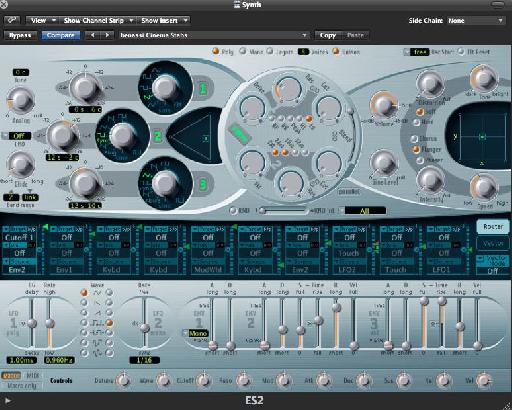
 © 2024 Ask.Audio
A NonLinear Educating Company
© 2024 Ask.Audio
A NonLinear Educating Company
Discussion
Sorry that I didn't get it right the first time around, but thanks for hanging in until we did. ^_^
Want to join the discussion?
Create an account or login to get started!